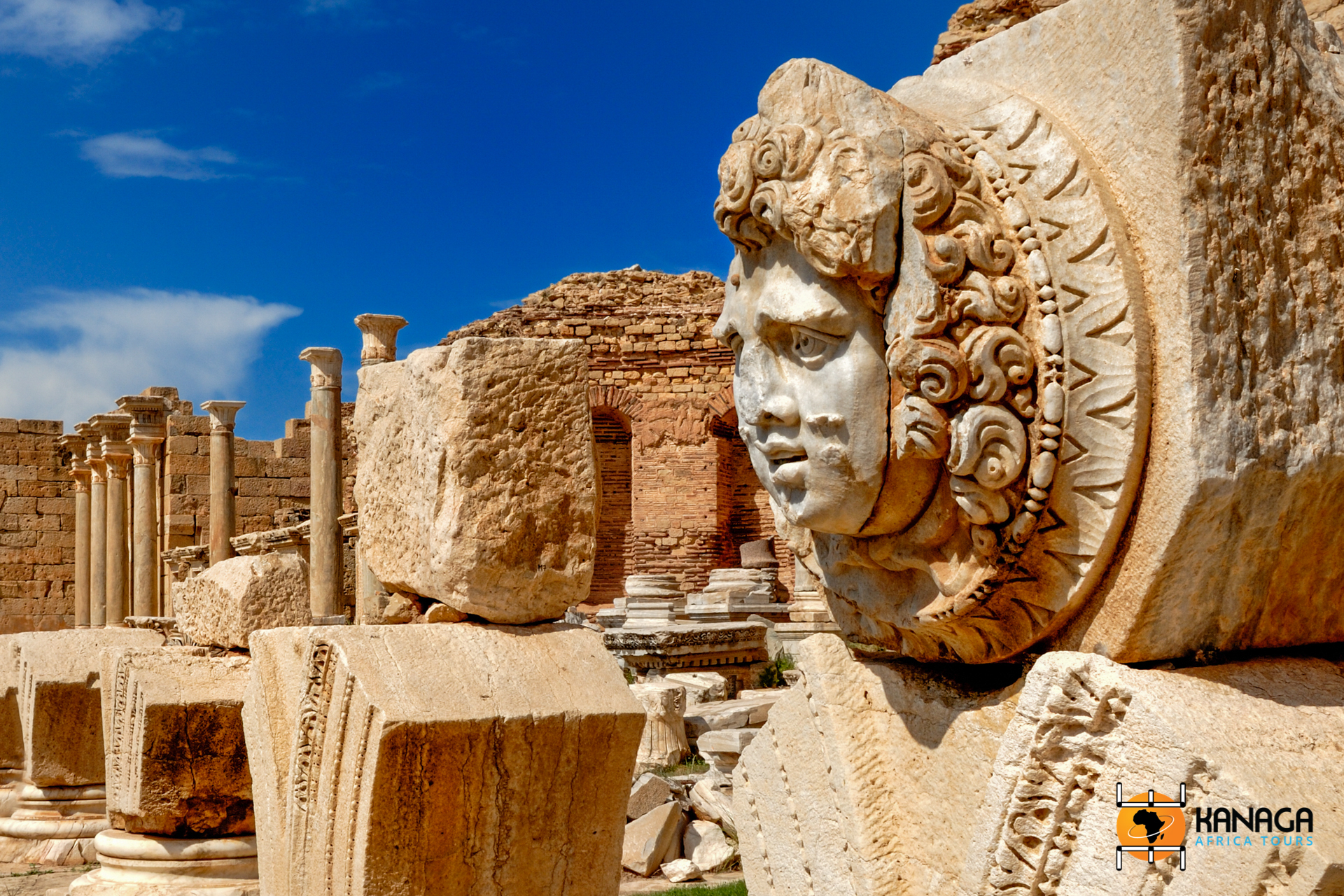If Algeria boasts the world’s second-largest heritage, after Italy, in terms of quantity and quality of ancient Roman ruins, the Libyan coast is no less impressive, home to two of the grandest and best-preserved examples of Roman cities in the entire Mediterranean basin.
Leptis Magna, as its name suggests, was the most important Roman settlement in Africa and today, second in integrity of state of preservation only to Pompeii. Its limestone buildings and monuments have been able to withstand the elements because they have been entirely buried by sand for centuries, arriving remarkably intact to the present day, despite having been despoiled of most of its decorations.
Probably founded in the 7th century BC, as a Phoenician port, it was first under Carthaginian influence, becoming part of the Roman sphere of control from the 2nd century BC. It flourished in strategic importance under Augustus and Hadrian, as a commercial seaport, especially in the traffic of ferocious beasts from sub-Saharan Africa bound for the Empire’s circuses, and finally exploded in splendour under Septimius Severus, who, as a native of Leptis Magna himself, transformed it into one of the grandest cities in the Mediterranean in the 2nd century AD, once he became Emperor.
Named a UNESCO World Heritage Site in 1982, its ruins were the subject of imposing archaeological excavations that brought to light its ancient splendour, in the colonnaded streets, forums, basilicas and temples, baths and amphitheatres, and imposing monuments, arranged according to the proverbial urban sumptuousness of Imperial Rome. Everything in Leptis Magna celebrated the luxury and glories of Rome, from the monumental Arch of Septimius Severus to the luxurious Hadrianic Baths, once entirely covered in splendid marble and mosaics, from the Nymphaeum, originally adorned with marble statues, to the magnificent colonnaded street that connected the port to the Severan Forum, embellished with capitals of Gorgon and Medusa heads, still standing there today. And again, the imposing Severan Basilica, dedicated to the cult of Hercules and Dionysus, the Trajan and Tiberius Arches, the Market, the Circus and the Amphitheatre outside the walls, without forgetting the port with its stone quays and lighthouse, which unfortunately a clumsy enlargement at the time inexorably exposed to silting up, in fact one of the main causes that decreed the decline of the city a few centuries later.
If the theatre of Leptis Magna is one of the oldest Roman theatres in stone, that of Sabratha was the largest in the whole of Africa. The city was part of the triad of major centres in Tripolitania, together with Oea and Leptis Magna itself, which had a similar historical excursus.
The Sabratha ruins were also inscribed on the UNESCO World Heritage list in 1982. The monumental theatre, dating back to the Severan era, is undoubtedly the most magnificent of its kind handed down to us by the Roman genius. In a splendid position overlooking the azure waters of the Mediterranean, this splendid monument is visible from a long distance, a scenic suggestion that has made it famous not only for its undeniable architectural value.
A city of 20,000 inhabitants, Sabratha was much smaller than Leptis Magna, which had 100.000, but just as monumental in its urban and architectural plan: the Temple of Antoninus, the Capitol and the Curia, the Justinian Basilica and the Forum, the Temple of Isis and Serapis, the Baths of Oceanus and the Theatre, are just some of the sumptuous buildings and public places, once decorated with marble, columns, mosaics and frescoes, that framed this jewel of Imperial Rome, of which the Theatre was certainly the masterpiece.







